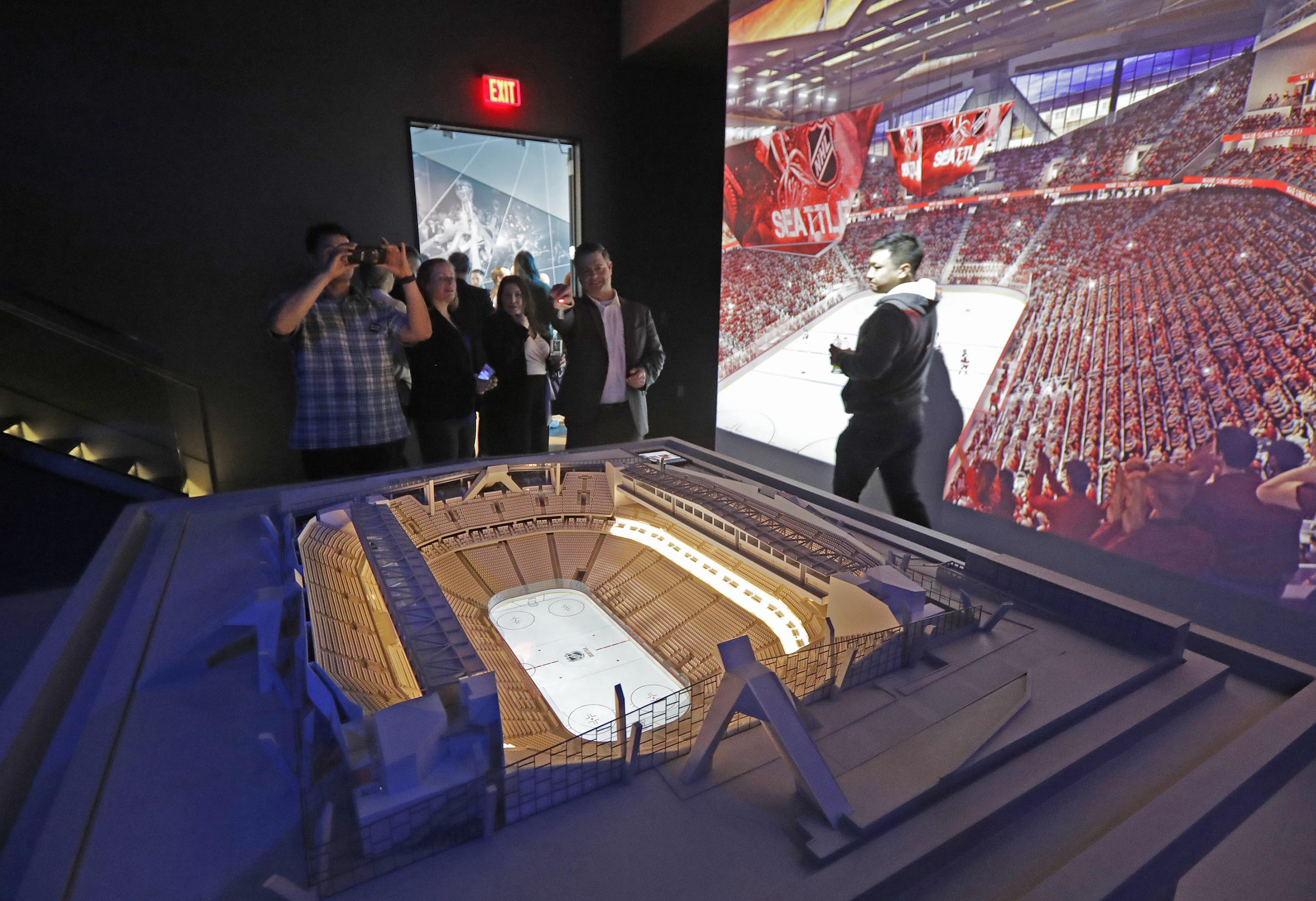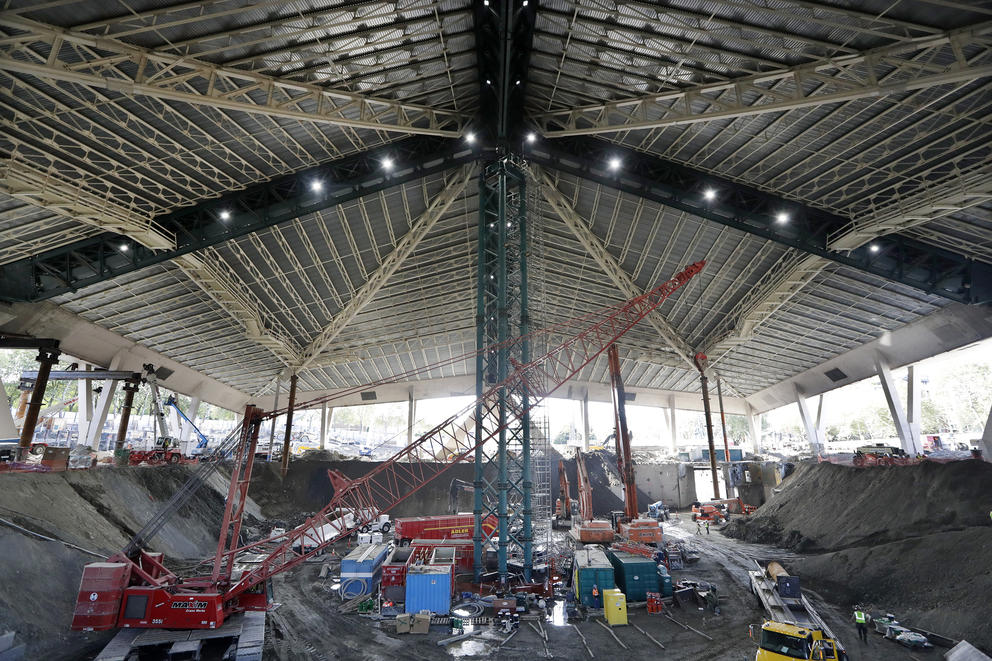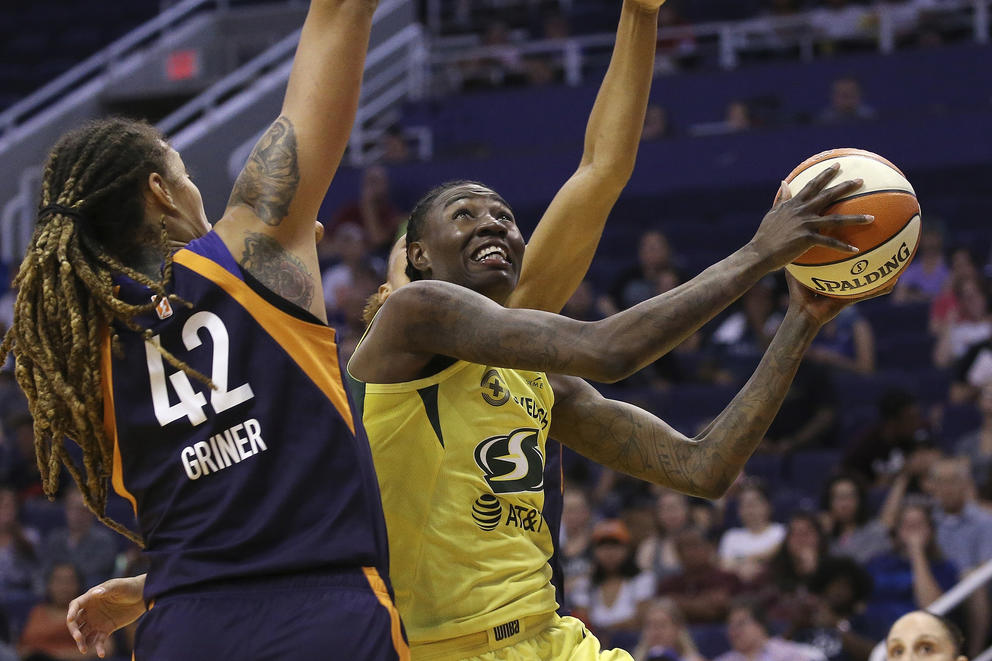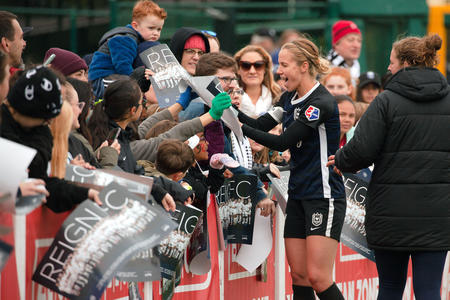Seattleites were not pleased. The day after the announcement, the front page of The Seattle Times read simply, “A sad day.” Three-thousand fans attended a “Save Our Sonics” rally outside a federal courthouse, in the hopes of preventing PBC from moving the teams. As the deal was being finalized, Donavan was asked by the Daily Oklahoman to compare the two situations.
“We were left not having any idea what our future was,” she said of her time with the Sting. “This is different in that we’re included in the deal with the Sonics. That’s a good thing. It’s nice to be seen as a viable product.”
Donovan’s Seattle Storm teams of 2003-2007 and her Charlotte Sting teams of 2001-2002 were more than viable products. She led the Sting to back-to-back playoff runs, and the Storm to winning records in four of her five seasons in Seattle. The veteran head coach, who has since passed away, was producing results, but that didn’t seem to matter.
“It would be a very dark day if the teams were to leave Seattle,” Donovan said. “I don’t know if it’s viable to think [Oklahoma City] can support the women’s team.”
That dark day arrived on April 18, 2006, when the Sonics and Storm’s relocation to Oklahoma City was approved by a 28-2 vote of the NBA Board of Governors.
But the fate of the Storm was not quite set.
Clay Bennett, leader of Professional Basketball Club, initially said the ownership group would be “thrilled” to have the WNBA team. But after securing the Sonics, the Storm were essentially treated as a throw-in.
“I’m not sure [moving the Storm to Oklahoma City] was ever a big consideration,” said Kevin Pelton, an ESPN.com reporter who worked for the Storm from 2003 to 2012. “I know one of the members of the ownership group is the guy who ended up buying the Detroit Shock and moving them to Tulsa, so he was interested in women’s basketball. But [the Storm] definitely weren’t ever a primary focus of their ownership group. It was mostly that the two organizations were so intertwined that they couldn’t just sell the Sonics without the Storm.”
Again, Donovan was seeing her team pushed and pulled by forces beyond their control. She said at the time that she had grown tired of seeing her teams rack up accolades, while simultaneously being treated like afterthoughts by their brother organizations.
Enter Force 10 Hoops LLC, which decided that Seattle’s WNBA franchise didn’t need to be tethered to a big brother. The local group, led by four women, bought the team in February 2008, making it the seventh WNBA organization at the time to be owned independent of an NBA franchise.
“Last year there was so much uncertainty,” longtime fan Denise Kilgore said to WNBA.com in 2008. “Will the Storm stay? Will they go? What’s going to happen? This year we have local ownership; we have our girls. The momentum is huge; we know they are ours from this point forward. It's just time to support [them] and we’re all there.”
Many of Seattle’s basketball fans did their best to support the hometown team. In 2008, the year the Sonics left town, the Storm saw an average of 8,265 fans fill the creaky bowl of KeyArena. Attendance numbers rose and fell over the next decade, a reflection of the team’s varying levels of success; but it never dipped below eighth-best in the league, which currently has 12 total teams, and was frequently in the top half.
The Storm did their part as well, winning WNBA championships in 2010 and in 2018. In the 11 seasons since the Sonics’ departure, Seattle has made nine playoff runs.
But as the team moved forward, its arena stood still.
Until 1994, 305 Harrison Street in Seattle was the site of the Seattle Coliseum. Then the arena was rebuilt, and, in 1995, reopened as KeyArena (the naming rights having been sold to KeyCorp). But among fans there was widespread concern that the renovations weren’t substantial enough; they ultimately cost the city and Sonics $95.5 million, combined.
“I’d say most people believe that when the Seattle Coliseum was remodeled into KeyArena that they kind of did it on the cheap,” said Jeff Brown, a writer for Cascadia SN and active participant in the movement to bring the Sonics back to Seattle. “They could have invested a lot more, built a lot more and they didn’t.”
The junior Thunderbirds hockey team had also called KeyArena home, since 1989. But the venue was not ideal for hockey — the sight lines were poor and the scoreboard was off-center when the arena was configured for ice — and the team moved to Kent in 2009. With the departure of the Thunderbirds and Sonics in the same year, KeyCorp decided to let its contract with the city expire on Dec. 31, 2010. In the span of a year, the Storm became the building’s primary tenant, sharing the arena with Seattle University’s men’s basketball team and a women’s flat-track roller derby league.
Despite their perennial success, the Storm — whose revenue grew to $9 million in 2017-18 — did not have nearly the financial wherewithal to provide the arena with the renovations it sorely needed. The city, meanwhile, refused to commit funds beyond those necessary for basic maintenance.
So instead of receiving regular upgrades, KeyArena remained a relic of the past — the ruby red “KeyArena” sign still on top of the building years after KeyCorp’s naming rights deal expired.
“It wasn’t that [KeyArena] was in disarray. It was just that they had stopped doing anything after it was renovated in 1995,” said Pelton. “I go to games all time in Portland at the Moda Center, and that was built the same year. But they’ve been constantly working on it and continuing to upgrade it. So it feels very modern, and KeyArena felt very old.”
Former Sonics forward Rashard Lewis, upon returning to KeyArena in 2017 when it hosted the Big3 basketball league playoffs, remarked on how little had changed since his first season in Seattle in 1998.
“They got the same Jumbotron from back when I was drafted,” Lewis joked in a video published by the league. “That shit ain’t HD.”
In 2017, the Storm moved one big step closer to securing an arena fit for three-time WNBA champions. On Dec. 4, 2017, the Seattle City Council voted 7-1 to approve a memorandum of understanding between the city and the entertainment and sports facilities company Oak View Group (OVG), with the purpose of completing a $600 million renovation of KeyArena as early as October 2020. A little more than a year later, an NHL franchise — which has yet to choose a team name — followed suit, as OVG filed an application with the league to play at a remodeled KeyArena.
The construction costs for the project have since risen to more than $900 million as its reopening has been delayed until at least June 2021. But if anything is abundantly clear, it’s that the remodel will be substantial, and the Storm will soon be playing in a state-of-the-art facility.
And, unlike KeyArena’s 1995 renovations, OVG’s remodel is being undertaken with both hockey and basketball in mind.
Not Sonics basketball — at least, for now. For the foreseeable future, the Seattle Storm will be the primary basketball tenant at the rebuilt KeyArena. The only hoops team they’ll share a spotlight with is the Seattle University Redhawks. And, if and when the Sonics do return, the Storm will still lay claim to their own locker room. They’ve earned that much (and, one could argue, a whole lot more).
A far cry from the abandonment that Donovan felt after both the Storm and Sting initially announced they’d leave their home cities, OVG co-founder Tim Leiweke and his brother — Seattle NHL team CEO Tod Leiweke — have enthusiastically embraced Seattle’s WNBA franchise.
"The Storm are fantastic and such a distinct, unique part of Seattle,” Tod Leiweke said during the 2019 NHL draft. “So they play games in our building, but they're really a partner. We hope their winning ways will affect every other thing that happens in that building. We're so proud of them, and we hope this is a defining moment for the Storm. Hopefully, we're going to provide the Storm long-term economic staying power, and I really think that can have a material impact on the rest of the WNBA teams. They have a great lease [which runs through 2028] that will allow them to do good things, and we're building a very strong partnership with them.”
Despite the support from the Seattle NHL team, the Storm’s new home isn’t coming without sacrifices. While OVG remodels KeyArena, the Storm has been forced to play two seasons of home games in other locations (and potentially a third if the site’s reopening date keeps getting pushed back).

For the most recent season, which wrapped up in September with a second round playoff loss to the Los Angeles Sparks, that meant splitting home games between the University of Washington’s HecEd Pavilion and Everett’s Angel of the Winds Arena. HecEd, where UW’s men’s and women’s basketball teams play, felt like a natural setting. Angel of the Winds Arena, built to host the Everett Silvertips junior hockey team, did not, especially for a team defending a WNBA title.
“Does it feel great to be displaced from your new arena? No. But it is what it is. You just kind of gotta figure it out,” Storm point guard Sue Bird told Crosscut. “Five years from now, we won’t even remember being at Everett; we won’t even remember being at UW. We’ll just be excited to have a new arena. I think we’ve had to do what we can to get comfortable. I think Everett for now is great.
“Is it different? Yeah. But it’s totally serviceable. I think for us, when you get displaced, you just kind of have to adapt and go with the flow of it. Same when you go on the road.”
Asking fans in Seattle to drive 30 minutes without traffic, and over an hour with it, seemed unreasonable to many — and resulted in a season-low 5,011 attendance for the Storm’s single post-season game.
“Having a world-class arena for fans, partners and the Seattle teams is worth a couple years of challenges. We are focused on the long game and know it will be worth it in a few years,” Storm CEO and General Manager Alisha Valvanis told Crosscut. “There is no question relocations are hard on a franchise and to temporarily relocate to not one but two arenas adds complexity and challenges to everyone — from fans to the players to front office staff. We are grateful for the commitment from our fans, corporate partners, new arena partners and Seattle. It was a success first season out.”
Despite the home court complications the Storm will have to continue to endure, they’ll eventually share a venue with a partner that appears to be invested in the long-term success of their franchise. Steve Mattson, director of operations at New Arena at Seattle Center, said the Storm will have “the best building in their league,” and their relationship with NHL Seattle could yield additional sponsorship opportunities and expose the team to a new audience.
A few months ago, the Leiwekes invited Storm executives to the NHL Seattle Preview Center, a building in Queen Anne that provides videos, photographs and a miniature model of the imminently arriving arena. When the group walked through the front door, the first thing they saw were two lockers, side by side. The locker on the left paid homage to Guyle Fielder, a Hall of Fame center with the now-defunct Seattle Totems hockey team. His No. 7 Totem sweater hung on a hook, next to his State of Washington Hall of Fame plaque and gloves, skates and old wooden sticks from his playing career.
The locker on the right simply read, “Storm.” A signed picture of forward Breanna Stewart sat up top. Bobbleheads of Stewart and forward Jewell Loyd occupied the shelf beneath it. Storm memorabilia — including a “2018 WNBA Champs” cap — hung below those.
“We Storm-ified it,” said Mattson, proudly. “We wanted to incorporate elements of the Storm’s [history]. We wanted to say, coming into this [new arena], ‘We want to provide for you and help assist your future success.’”
The Storm’s history — three WNBA championship trophies, memorabilia from 15 playoff runs and more — can’t be contained in a single locker. But sooner rather than later, it’ll be displayed in a suitable home.
Correction: An earlier version of this story misstated when the Seattle Storm were knocked out of the 2019 WNBA playoffs. The story has been corrected.








